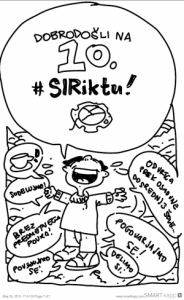Gorazd Krumpak, Srednja medijska in grafična šola Ljubljana, Ljubljana
Quality teamwork is integral to team members feeling connected, being efficient, and carrying out a project successfully. Encouraging such behavior in a classroom environment prepares the students for this type of work in their future careers. In teaching students the ins and outs of teamwork, the teacher should preferably have the possibility to both oversee and grade the progress of both the group and its individual members. The insight gained thusly enables the teacher to further guide the group into a desired direction. The feedback acquired by the end of a group project provides assistance to the teacher and the students when it comes to establishing the input of individual group members and recognizing problems faced by the students on a group project when trying to achieve the set goals. To achieve that more easily we have developed an application for self-evaluation of the work done by individual group members. This tools main purpose is to enable the teacher to not just observe the group but also acquire feedback on the group dynamics from the group members themselves. It can help monitor a large number of groups. With it the teacher receives consistent and comparable short- and long-term data. The tool is designed as a web application. Use requires access to the Internet and a browser. The teacher and the students access the application through a website. The teacher is granted access to the user interface for editing the self-evaluation questionnaire, whereas the students can only access the self-evaluation questionnaire itself. Teachers can use the interface to prepare a self-evaluation questionnaire in advance and set the grading parameters. It is easy to form groups, assign group members, and prepare the questions for the questionnaire. The data produced by the students filling it out is presented to the teacher in a raw form of unprocessed data or processed statistically. The tool does not allow open type questions, therefore the results of a self-evaluation survey do not stray outside the boundaries of a set framework. We will guide the seminar attendees through the individual steps necessary to prepare a self-evaluation questionnaire. First we set the type of grading scheme (numerical grades, narrative grading or letter grading). Then we form groups and assign group members. Before posting the questionnaire online we form the individual questions. Participants will be given access to the application to form their own questionnaire and then adjust it after experiencing it as a student. Together we will analyse the user experience as such data provides valuable suggestions and propositions for further development of the application.
